Themed collection 2020 Emerging Investigators

Contributors to the Emerging Investigators Collection 2020

Chem. Commun., 2021,57, 1066-1079
https://doi.org/10.1039/D1CC90026A
Tailored electrocatalysts by controlled electrochemical deposition and surface nanostructuring
Atomic representation of tailored electrocatalysts: near-surface alloy (top), shaped nanoparticles (right), atomic ensembles (bottom) and deposited metallic adlayers (left).
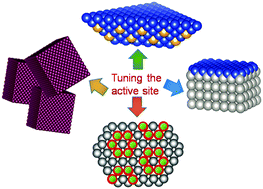
Chem. Commun., 2020,56, 13261-13272
https://doi.org/10.1039/D0CC06099B
Recent advances of dinuclear nickel- and palladium-complexes in homogeneous catalysis
In this highlight, we provide a current perspective of synthetic methodology development catalyzed by dinuclear Ni- and Pd-complexes in the past decade. The new catalytic reactivities of dinuclear Ni- and Pd-complexes are discussed.

Chem. Commun., 2020,56, 8524-8536
https://doi.org/10.1039/D0CC02542A
Small molecule–RNA targeting: starting with the fundamentals
Complementary approaches such as scaffold-based synthesis, cheminformatics, assay development, and pattern recognition have progressed fundamental understanding of small molecule:RNA recognition and led to the development of bioactive RNA ligands.

Chem. Commun., 2020,56, 14744-14756
https://doi.org/10.1039/D0CC06796B
Recent developments in biomolecule-based nanoencapsulation systems for antimicrobial delivery and biofilm disruption
Biomolecules are very attractive nanomaterial components, generally, due to their biocompatibility, biodegradability, abundance, renewability, and sustainability, as compared to other resources for nanoparticle-based delivery systems.
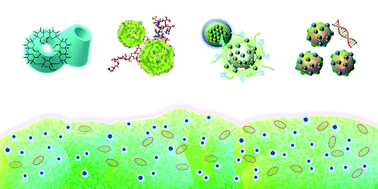
Chem. Commun., 2020,56, 13907-13917
https://doi.org/10.1039/D0CC05880G
Introducing borane clusters into polymeric frameworks: architecture, synthesis, and applications
This feature article summarizes the preparation and applications of borane cluster-containing polymers and covers research progress and future trends of borane cluster-containing linear, dendritic, macrocyclic polymers and metal–organic frameworks.
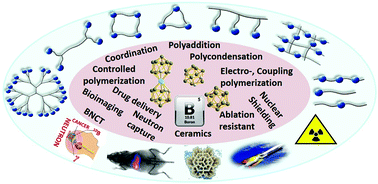
Chem. Commun., 2020,56, 11720-11734
https://doi.org/10.1039/D0CC04709K
Proteins as diverse, efficient, and evolvable scaffolds for artificial metalloenzymes
We have extracted and categorized the desirable properties of proteins that are adapted as the scaffolds for artificial metalloenzymes.
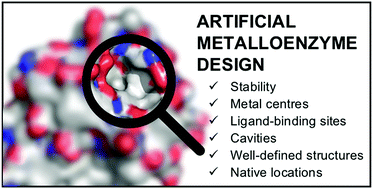
Chem. Commun., 2020,56, 9586-9599
https://doi.org/10.1039/D0CC03137B
Stimuli-responsive structural changes in metal–organic frameworks
This feature article mainly summarizes how the structure of MOFs changes under external stimuli.
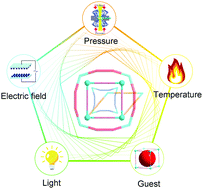
Chem. Commun., 2020,56, 9416-9432
https://doi.org/10.1039/D0CC03197F
Beryllium coordination chemistry and its implications on the understanding of metal induced immune responses
The coordination chemistry of beryllium with ligands containing biologically relevant functional groups is discussed. The geometry, speciation and reactivity of these compounds, aids a better understanding of metal ion induced immune reactions.
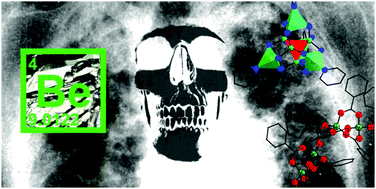
Chem. Commun., 2020,56, 8895-8907
https://doi.org/10.1039/D0CC03802D
Operando vibrational spectroscopy for electrochemical biomass valorization
Operando spectroscopy to accelerate the development of biomass valorization catalysts is reviewed in this feature article.
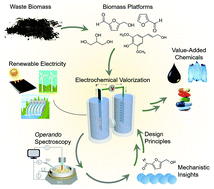
Chem. Commun., 2020,56, 8726-8734
https://doi.org/10.1039/D0CC03084H
Metal–organic complex-based chemodynamic therapy agents for cancer therapy
This feature article summarizes the recent progress in the study of chemodynamic therapy agents based on metal–organic complexes.

Chem. Commun., 2020,56, 8332-8341
https://doi.org/10.1039/D0CC03012K
Biomimetic self-assembly of subcellular structures
This article summarizes recent progress on biomimetic subcellular structures and discusses integration of these isolated systems.
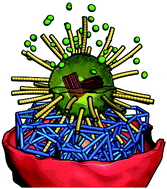
Chem. Commun., 2020,56, 8342-8354
https://doi.org/10.1039/D0CC01395A
CO2 = CO + [O]: recent advances in carbonylation of C–H bonds with CO2
Carbon dioxide (CO2) is an ideal one-carbon source owing to its nontoxicity, abundance, availability, and recyclability.
![Graphical abstract: CO2 = CO + [O]: recent advances in carbonylation of C–H bonds with CO2](/en/Image/Get?imageInfo.ImageType=GA&imageInfo.ImageIdentifier.ManuscriptID=D0CC00547A&imageInfo.ImageIdentifier.Year=2020)
Chem. Commun., 2020,56, 8355-8367
https://doi.org/10.1039/D0CC00547A
The odyssey of cobaloximes for catalytic H2 production and their recent revival with enzyme-inspired design
The rational inclusion of enzyme-inspired features around the cobaloxime core reinstates its status as a leading synthetic photo-/electro-catalyst for hydrogen production.
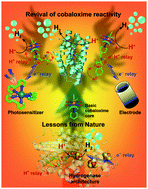
Chem. Commun., 2020,56, 8166-8181
https://doi.org/10.1039/D0CC03103H
Self-assembled peptide–inorganic nanoparticle superstructures: from component design to applications
Self-assembled peptide–nanoparticle superstructures, with tuned architectures and/or functionalities, hold great promise in multiple high-end applications.
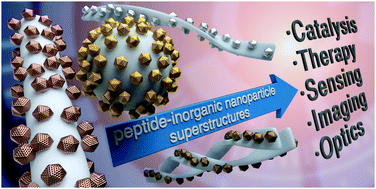
Chem. Commun., 2020,56, 8000-8014
https://doi.org/10.1039/D0CC02914A
Unravelling the local structure of catalytic Fe-oxo clusters stabilized on the MOF-808 metal organic-framework
Advanced synchrotron characterization and computational modelling are applied to understand the local structure of added redox-active iron-oxo clusters bridging zirconia-nodes within MOF-808.
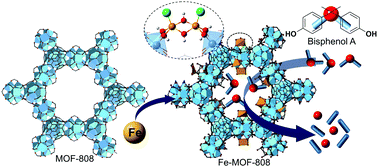
Chem. Commun., 2020,56, 15615-15618
https://doi.org/10.1039/D0CC06134D
Molecular layer deposition of Li-ion conducting “Lithicone” solid electrolytes
Molecular Layer Deposition (MLD) of “lithicone” thin films is demonstrated, which behave as ionically-conductive solid electrolytes for future battery applications.
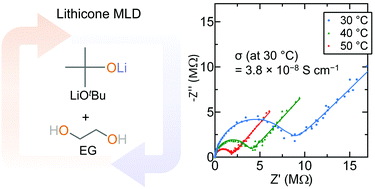
Chem. Commun., 2020,56, 15537-15540
https://doi.org/10.1039/D0CC06077A
Air exposed 1,4-bis(trimethylsilyl)-1,4-dihydropyrazine: an avant-garde carbonization precursor for multi-functionalized carbon material
1,4-Bis(trimethylsilyl)-1,4-dihydropyrazine acts as a small molecule precursor for carbonization to multi-functionalized carbon via polymeric intermediate formation upon air exposure.

Chem. Commun., 2020,56, 14805-14808
https://doi.org/10.1039/D0CC06597H
Nickel-catalyzed insertions of vinylidenes into Si–H bonds
Nickel catalysts promote intramolecular and intermolecular reductive insertions of 1,1-dichloroalkenes into Si–H bonds.
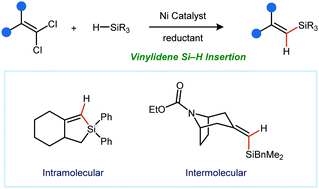
Chem. Commun., 2020,56, 14175-14178
https://doi.org/10.1039/D0CC05970F
Organic single crystals of cyano-substituted p-phenylene vinylene derivatives as transistors with low surface trap density
Cyano-substituted oligo(p-phenylene vinylene) derivatives with π–π interactions and intermolecular hydrogen bonds in orthogonal directions were synthesised, and demonstrated very low defect density by OFETs.
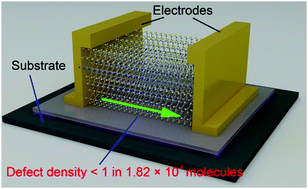
Chem. Commun., 2020,56, 13776-13779
https://doi.org/10.1039/D0CC06552H
Complexation behaviour of LiCl and LiPF6 – model studies in the solid-state and in solution using a bidentate picolyl-based ligand
Using a new bulky bidentate ligand and combining various structure elucidation methods, coordination modes of [ligand·LiX] (X = Cl, PF6) complexes both in solid-state and in solution have been revealed.
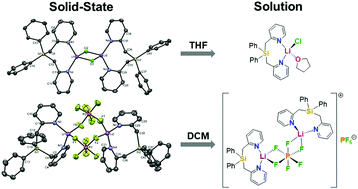
Chem. Commun., 2020,56, 13335-13338
https://doi.org/10.1039/D0CC05682K
Hydrophobicity-driven folding and seeded polymerization of cystine-based dimeric diamides in aqueous media
Hydrophobicity-driven folding of cystine-based dimeric diamides with aromatic substituents at the C- and N-termini slows their spontaneous assembly and thus seeded supramolecular polymerization was achieved in aqueous media.

Chem. Commun., 2020,56, 12901-12904
https://doi.org/10.1039/D0CC05255H
Boronic acid-mediated ring-opening and Ni-catalyzed arylation of 1-arylcyclopropyl tosylates
We describe a procedure for the ring-opening and arylation of 1-arylcyclopropyltosylates to yield 2-substituted allyl products using boronic acids and Ni catalysis.

Chem. Commun., 2020,56, 12538-12541
https://doi.org/10.1039/D0CC05895E
Hydrogenation and electrocatalytic reduction of carbon dioxide to formate with a single Co catalyst
A cobalt(I) complex is shown to be capable of both electrocatalytic reduction and hydrogenation of CO2 to formate.
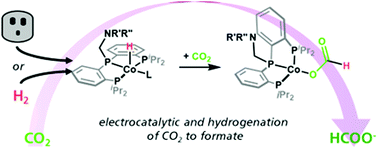
Chem. Commun., 2020,56, 12142-12145
https://doi.org/10.1039/D0CC04310A
Visualizing the helical stacking of octahedral metallomesogens with a chiral core
The detailed stacking structure of a helical columnar liquid crystal formed by enantiopure octahedral metallomesogens was investigated using both GI-XRD and MD simulation.

Chem. Commun., 2020,56, 12134-12137
https://doi.org/10.1039/D0CC05930G
Selective ring-rearrangement or ring-closing metathesis of bicyclo[3.2.1]octenes
Explored was the competitive ring-closing metathesis vs. ring-rearrangement metathesis of bicyclo[3.2.1]octenes prepared by a simple and convergent synthesis from bicyclic alkylidenemalononitriles and allylic electrophiles.
![Graphical abstract: Selective ring-rearrangement or ring-closing metathesis of bicyclo[3.2.1]octenes](/en/Image/Get?imageInfo.ImageType=GA&imageInfo.ImageIdentifier.ManuscriptID=D0CC04624H&imageInfo.ImageIdentifier.Year=2020)
Chem. Commun., 2020,56, 11779-11782
https://doi.org/10.1039/D0CC04624H
Cyclodextrin-derived polymer networks for selective molecular adsorption
A facile synthetic method is developed to afford cyclodextrin-derived polymer networks that exhibit high selectivity in capturing certain organic compounds in water.
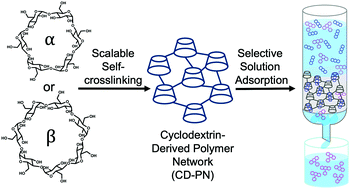
Chem. Commun., 2020,56, 11783-11786
https://doi.org/10.1039/D0CC04784H
Excimer emission and magnetoluminescence of radical-based zinc(II) complexes doped in host crystals
A ZnII complex with luminescent organic radical ligands doped into host molecular crystals showed an excimer emission and its luminescent behavior was significantly modulated by an external magnetic field.
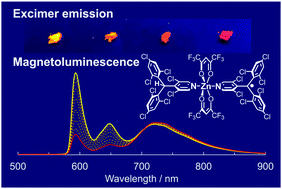
Chem. Commun., 2020,56, 11195-11198
https://doi.org/10.1039/D0CC04830E
Optical property control of π-electronic systems bearing Lewis pairs by ion coordination
π-Electronic systems bearing Lewis pairs were synthesized. The tuning of the optical properties was demonstrated by the addition of various ion pairs, and these behaviours were elucidated by theoretical calculations.
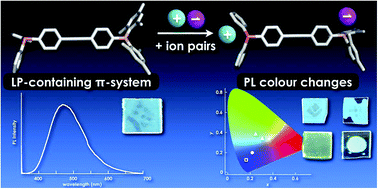
Chem. Commun., 2020,56, 10654-10657
https://doi.org/10.1039/D0CC04442C
Synthesis, characterization and use of benzothioxanthene imide based dimers
The synthesis of benzothioxanthene imide based dimers and their first use in light emitting devices are reported herein.
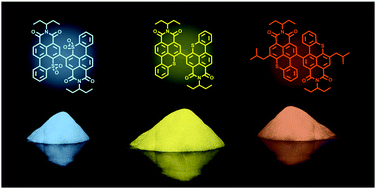
Chem. Commun., 2020,56, 10131-10134
https://doi.org/10.1039/D0CC04556J
Role of specific distorted metal complexes in exciton self-trapping for hybrid metal halides
The photoemission by exciton self-trapping in low-dimensional hybrid metal halides is promoted for specific distortions of the metal environment. Selected crystal structures with such distortions enables the synthesis of efficient phosphors.

Chem. Commun., 2020,56, 10139-10142
https://doi.org/10.1039/D0CC04778C
Electropolymerization in a confined nanospace: synthesis of PEDOT nanoparticles in emulsion droplet reactors
Size controlled PEDOT nanoparticles were synthesized by confined space electrochemistry inside emulsions.
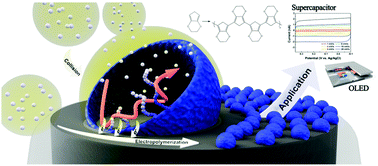
Chem. Commun., 2020,56, 9624-9627
https://doi.org/10.1039/D0CC03834B
Direct N-formylation of nitroarenes with CO2
Direct N-formylation of nitroarenes with CO2 is developed to prepare N-aryl formamides without the need of preforming anilines as conventional substrates.
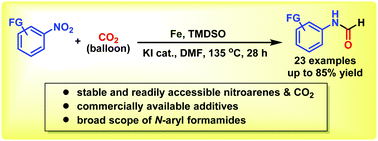
Chem. Commun., 2020,56, 9620-9623
https://doi.org/10.1039/D0CC03098H
Design, synthesis and characterization of structurally dynamic cyclic N,S-acetals
We report the synthesis, characterization and comparison of a series of electronically perturbed, cyclic N,S-acetals.

Chem. Commun., 2020,56, 9118-9121
https://doi.org/10.1039/D0CC03503C
Modifying the luminescent properties of a Cu(I) diphosphine complex using ligand-centered reactions in single crystals
Here we report how reactions at a chemically reactive diphosphine shift the long-lived luminescent colour of a crystalline three-coordinate Cu(I) complex from green to blue.

Chem. Commun., 2020,56, 9110-9113
https://doi.org/10.1039/D0CC03427D
Conversion of racemic alcohols to optically pure amine precursors enabled by catalyst dynamic kinetic resolution: experiment and computation
An unprecedented base metal catalysed asymmetric synthesis of α-chiral amine precursors from racemic alcohols is reported.

Chem. Commun., 2020,56, 9094-9097
https://doi.org/10.1039/D0CC02881A
An ester electrolyte for lithium–sulfur batteries capable of ultra-low temperature cycling
Li||SPAN batteries in the lithium bis(fluorosulfonyl)imide methyl propionate/fluoroethylene carbonate (LiFSI MP/FEC) electrolyte system can charge and discharge at −40 °C with over 78% room temperature capacity retention.
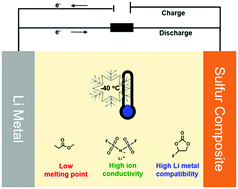
Chem. Commun., 2020,56, 9114-9117
https://doi.org/10.1039/D0CC03798B
The wavelength-dependent optical properties of weakly absorbing aqueous aerosol particles
A model for calculating the wavelength-dependent refractive index of multicomponent mixtures is presented and applied to aqueous systems in the atmosphere and oceans.
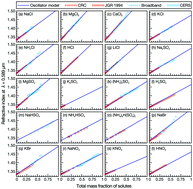
Chem. Commun., 2020,56, 8928-8931
https://doi.org/10.1039/D0CC02737E
Dopamine polymer derived isolated single-atom site metals/N-doped porous carbon for benzene oxidation
Isolated single-atom sites metals/nitrogen-doped porous carbon (ISAS M/NPC, M = Fe, Co, Ni) are prepared by a polymerization-pyrolysis-etching-activation strategy, which can be used as high efficiency and selectivity benzene oxidation catalysts.
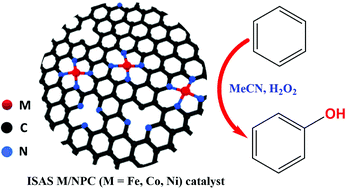
Chem. Commun., 2020,56, 8916-8919
https://doi.org/10.1039/D0CC03620J
Synthesis and characterization of low-nuclearity lantern-type porous coordination cages
This work presents the design, synthesis, and characterization of small lanterns with BET surface areas in excess of 200 m2 g−1. These cages represent the lower size limit for permanently microporous coordination cages.
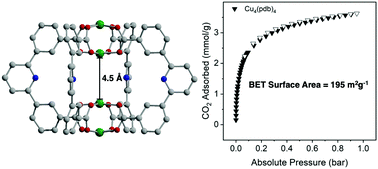
Chem. Commun., 2020,56, 8924-8927
https://doi.org/10.1039/D0CC03266B
Active learning and neural network potentials accelerate molecular screening of ether-based solvate ionic liquids
Solvate ionic liquids (SIL) have promising applications as electrolyte materials and machine learning can help accelerate the virtual screening of candidate molecules for SIL.
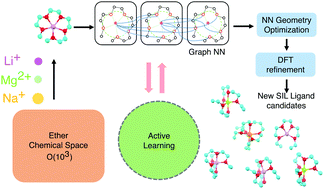
Chem. Commun., 2020,56, 8920-8923
https://doi.org/10.1039/D0CC03512B
Efficient near-infrared luminescence from bis-cyclometalated iridium(III) complexes with rigid quinoline-derived ancillary ligands
Rigid bis-cyclometalated iridium complexes with quinoline-based chelating ancillary ligands phosphoresce in the near-infrared region with high efficiency.
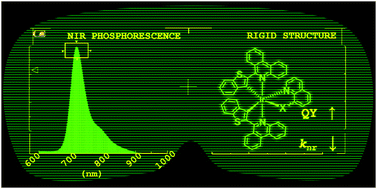
Chem. Commun., 2020,56, 8754-8757
https://doi.org/10.1039/D0CC02745F
Efficient formation of [3]pseudorotaxane based on cooperative complexation of dibenzo-24-crown-8 with diphenylviologen axle
A novel cooperative [3]pseudorotaxane system consisting of dibenzo-24-crown-8 (DB24C8) and diphenylviologen axle has been developed.
![Graphical abstract: Efficient formation of [3]pseudorotaxane based on cooperative complexation of dibenzo-24-crown-8 with diphenylviologen axle](/en/Image/Get?imageInfo.ImageType=GA&imageInfo.ImageIdentifier.ManuscriptID=D0CC03131C&imageInfo.ImageIdentifier.Year=2020)
Chem. Commun., 2020,56, 8735-8738
https://doi.org/10.1039/D0CC03131C
Normal-pulse-voltage-assisted in situ fabrication of graphene-wrapped MOF-derived CuO nanoflowers for water oxidation
Herein, a normal-pulse-voltage-assisted method is proposed for preparation of high quality graphene-wrapped CuO nanoflowers on CF. The as-obtained CuO NF@G/CF electrode exhibits a competitive OER catalytic performance in 1.0 M KOH solution.
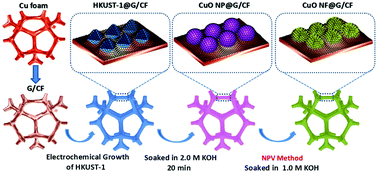
Chem. Commun., 2020,56, 8750-8753
https://doi.org/10.1039/D0CC03132A
A macrocycle directed total synthesis of di-O-methylendiandrin A
The synthesis of di-O-methylendiandrin A has been achieved using diastereoselective, vicinal alkylation and transannular McMurry reactions of a macrocyclic 1,4-diketone, to establish stereochemistry and the strained ring of the natural product.
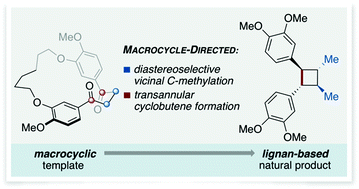
Chem. Commun., 2020,56, 8747-8749
https://doi.org/10.1039/D0CC03302B
How does excited-state antiaromaticity affect the acidity strengths of photoacids?
Photoacids like substituted naphthalenes (X = OH, NH3+, COOH) are aromatic in the S0 state and antiaromatic in the S1 state. Antiaromaticity relief explains why some are more photoacidic than others.
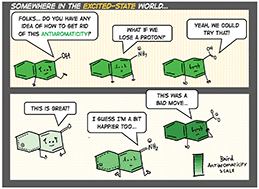
Chem. Commun., 2020,56, 8380-8383
https://doi.org/10.1039/D0CC02952A
Manganese complex-catalysed α-alkylation of ketones with secondary alcohols enables the synthesis of β-branched carbonyl compounds
Diverse β-functionalised carbonyl compounds were synthesized via a manganese(I) complex-catalysed α-alkylation of ketones with secondary alcohols.
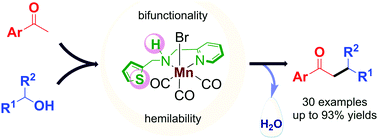
Chem. Commun., 2020,56, 8376-8379
https://doi.org/10.1039/D0CC01460E
Gold-catalyzed intermolecular [4+1] spiroannulation via site-selective aromatic C(sp2)–H functionalization and dearomatization of phenol derivatives
A novel gold(I)-catalyzed chemo- and site-selective cascade C–H functionalization/dearomatization of naphthols or phenols with o-alkynylaryl-α-diazoesters has been developed.
![Graphical abstract: Gold-catalyzed intermolecular [4+1] spiroannulation via site-selective aromatic C(sp2)–H functionalization and dearomatization of phenol derivatives](/en/Image/Get?imageInfo.ImageType=GA&imageInfo.ImageIdentifier.ManuscriptID=D0CC01118E&imageInfo.ImageIdentifier.Year=2020)
Chem. Commun., 2020,56, 8202-8205
https://doi.org/10.1039/D0CC01118E
Unexpected reactivity of a PONNOP ‘expanded pincer’ ligand
A PONNOP ‘expanded pincer’ ligand is described that can bind two copper(I) atoms in close proximity, but undergoes an unexpected rearrangement in the presence of nickel(II) salts.

Chem. Commun., 2020,56, 8198-8201
https://doi.org/10.1039/D0CC02166K
A tetranuclear nickel cluster isolated in multiple high-valent states
An all Ni(III) tetranuclear cluster is isolated. Metal-centered oxidations are proposed for it and its mixed-valent congeners, supported by crystallographic, spectroscopic, and computational methods.
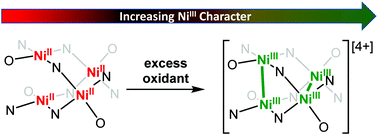
Chem. Commun., 2020,56, 8182-8185
https://doi.org/10.1039/D0CC01699C
Nickel-catalyzed intramolecular desymmetrization addition of aryl halides to 1,3-diketones
A nickel-catalyzed intramolecular addition of aryl halides to 1,3-diketones was first developed to afford a polycyclic framework with two tetrasubstituted carbons in excellent diastereoselectivity. Moderate enantioselectivities were also achieved.

Chem. Commun., 2020,56, 8194-8197
https://doi.org/10.1039/D0CC00457J
High Young's modulus carbon fibers are fouling resistant with fast-scan cyclic voltammetry
High modulus carbon-fibers exhibit similar resistance to chemical fouling as carbon nanotube based materials with fast-scan cyclic voltammetry.
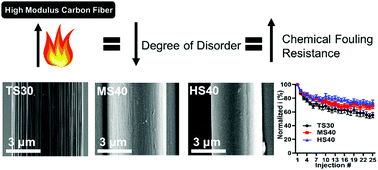
Chem. Commun., 2020,56, 8023-8026
https://doi.org/10.1039/D0CC02517H
Metal–organic polyhedra crosslinked supramolecular polymeric elastomers
Supramolecular polymeric elastomers crosslinked by metal–organic polyhedra were developed, featuring not only tunable mechanical properties but also dynamic actuation behaviors.
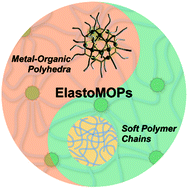
Chem. Commun., 2020,56, 8031-8034
https://doi.org/10.1039/D0CC01205J
Air and water stable secondary phosphine oxides as diazaphospholene precatalysts
Secondary phosphine oxides, which are air and water stable, and purifiable by chromatography generate phosphenium or phosphorus hydride catalysts in situ.

Chem. Commun., 2020,56, 8027-8030
https://doi.org/10.1039/D0CC01072C
Bismuthanylstibanes
The first examples of neutral Bi–Sb σ-bonds are reported and their reactivity is debuted.
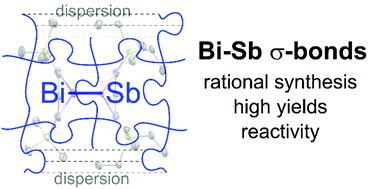
Chem. Commun., 2020,56, 8015-8018
https://doi.org/10.1039/D0CC00254B
Synthesis of orthogonally reactive multilayered microcapsules
An orthogonally chemically reactive microcapsule is derived from a single polymer following a layer-by-layer-deposition process, where a 1,4 conjugate addition reaction provided a basis for sequential deposition of a chemically reactive nanocomplex.
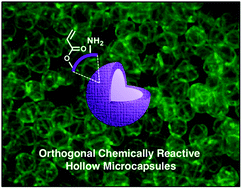
Chem. Commun., 2020,56, 7853-7856
https://doi.org/10.1039/D0CC00618A
Flower-like cobalt carbide for efficient carbon dioxide conversion
Flower-like Co2C enables photothermal catalytic CO2–epoxide cycloaddition with yields of up to ∼95% under solar light.
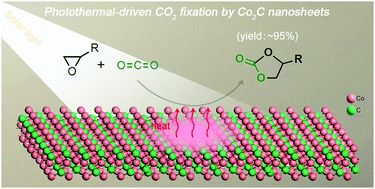
Chem. Commun., 2020,56, 7849-7852
https://doi.org/10.1039/D0CC01091J
Cross-β amyloid nanotubes for hydrolase–peroxidase cascade reactions
Herein, we report the catalytic potential of short peptide based cross-β amyloid nanotubes with surface exposed histidine capable of binding hemin and showing facile cascade reactions, playing the dual roles of hydrolases and peroxidases, two of the most important classes of enzymes in extant biology.
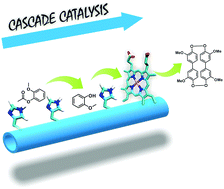
Chem. Commun., 2020,56, 7869-7872
https://doi.org/10.1039/D0CC00279H
C–F bond activation by pentamethylcyclopentadienyl-aluminium(I): a combined experimental/computational exercise
Although (AlCp*)4 is one of the longest known stable aluminium(I) compounds, it still has surprising reactivities in store as illustrated by the ability to break strong C–F bonds.
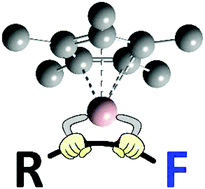
Chem. Commun., 2020,56, 7865-7868
https://doi.org/10.1039/D0CC00003E
Nickel(II)-methyl complexes adopting unusual seesaw geometries
Tris-carbene borate supported nickel methyl complexes adopt unusual seesaw geometries due to competing electronic and chelate effects.
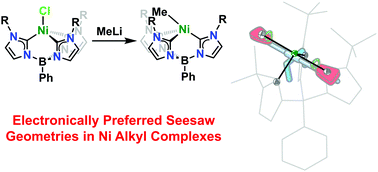
Chem. Commun., 2020,56, 7861-7864
https://doi.org/10.1039/C9CC09249H